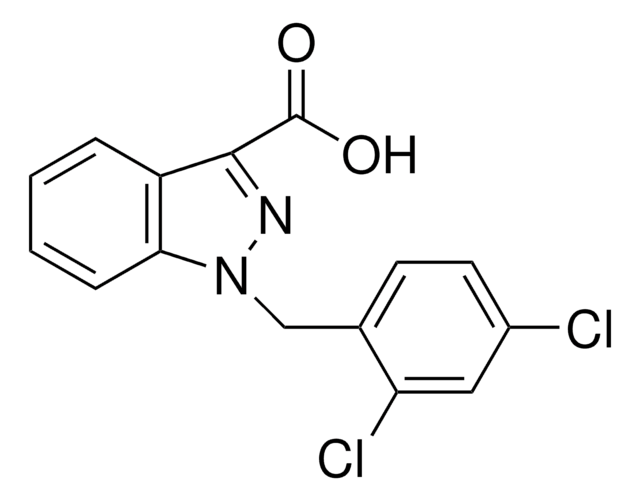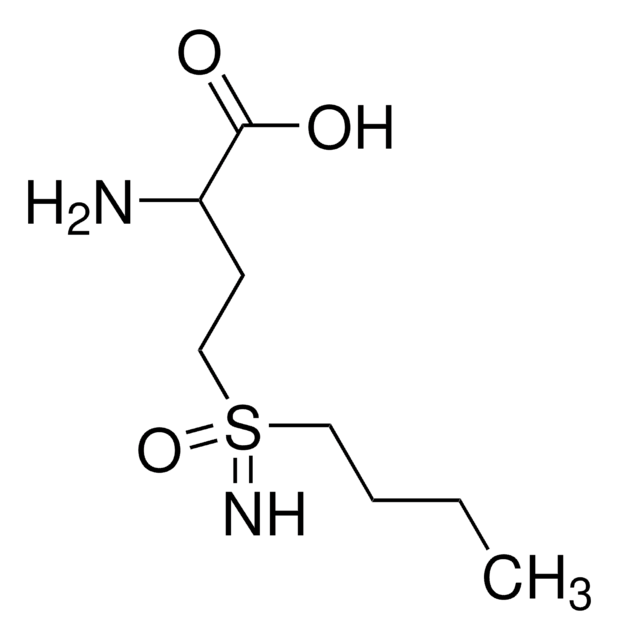推荐产品
化驗
≥98% (HPLC)
形狀
powder
顏色
white to beige
溶解度
DMSO: 20 mg/mL, clear
儲存溫度
−20°C
SMILES 字串
O=C(NC1=CN=CC=C1)C2=CC=C(CNS(=O)(C3=CC=C(C(C)(C)C)C=C3)=O)C=C2
InChI
1S/C23H25N3O3S/c1-23(2,3)19-10-12-21(13-11-19)30(28,29)25-15-17-6-8-18(9-7-17)22(27)26-20-5-4-14-24-16-20/h4-14,16,25H,15H2,1-3H3,(H,26,27)
InChI 密鑰
NGQPRVWTFNBUHA-UHFFFAOYSA-N
應用
STF-31 has been used in glucose transporter 1 (GLUT1) inhibition.
生化/生理作用
STF-31 selectively inhibits the glucose transporter GLUT1 and selectively impairs cancer cell growth of kidney and other types of cancer cells that lack the von Hippel-Lindau (VHL) tumor suppressor protein. Inactivation of VHL increases the activity of hypoxia-inducible factor transcription factor HIF, which in turn stimulates the transcription of genes involved in glucose metabolism, including the GLUT1 gene. VHL-deficient cancer cells, which include about 80% of renal cell carcinomas, are dependent on the high affinity GLUT1 transporter and aerobic glycolysis for ATP production. STF-31 binds directly to the GLUT1 transporter, blocking glucose uptake, resulting in necrosis in VHL-deficient cancer cells, but not in normal cells or cancer cells with intact VHL.
特點和優勢
This compound is a featured product for Gene Regulation research. Click here to discover more featured Gene Regulation products. Learn more about bioactive small molecules for other areas of research at sigma.com/discover-bsm.
訊號詞
Warning
危險聲明
危險分類
Acute Tox. 4 Oral
儲存類別代碼
11 - Combustible Solids
水污染物質分類(WGK)
WGK 3
閃點(°F)
Not applicable
閃點(°C)
Not applicable
Ryo Nishimura et al.
The Journal of veterinary medical science, 79(11), 1878-1883 (2017-10-20)
A major role of the corpus luteum (CL) is to produce progesterone (P4). The CL has immature vasculature shortly after ovulation, suggesting it exists under hypoxic conditions. Hypoxia-inducible factor-1 (HIF1) induces the expression of glucose transporter 1 (GLUT1). To clarify
Chaoyi Zhang et al.
The Journal of endocrinology, 246(2), 109-122 (2020-06-03)
Adropin plays a role in the maintenance of energy homeostasis, insulin resistance prevention, and impaired glucose tolerance. However, the molecular mechanisms by which adropin affects hepatic glucose and lipid metabolism in vitro are not entirely understood. This study intended to
Hypoxia increases glucose transporter 1 expression in bovine corpus luteum at the early luteal stage
Nishimura R, et al.
The Journal of Veterinary Medical Science, 79(11), 1878-1883 (2017)
Prahlad V Raninga et al.
Theranostics, 10(12), 5259-5275 (2020-05-07)
Purpose: Lacking effective targeted therapies, triple-negative breast cancer (TNBCs) is highly aggressive and metastatic disease, and remains clinically challenging breast cancer subtype to treat. Despite the survival dependency on the proteasome pathway genes, FDA-approved proteasome inhibitors induced minimal clinical response
Jun Zhang et al.
Oncogene, 38(24), 4669-4684 (2019-02-13)
EBV infection of preinvasive nasopharyngeal epithelium is believed to be an initiation step during pathogenesis of nasopharyngeal carcinoma (NPC), but the mechanisms remain poorly understood. Here we report a novel mechanism driving NPC metastasis through the EBV-encoded LMP1-mediated metabolic reprogramming
商品
We offer a variety of small molecule research tools, such as transcription factor modulators, inhibitors of chromatin modifying enzymes, and agonists/antagonists for target identification and validation in gene regulation research; a selection of these research tools is shown below.
我们的科学家团队拥有各种研究领域经验,包括生命科学、材料科学、化学合成、色谱、分析及许多其他领域.
联系技术服务部门





![2-脱氧-2-[(7-硝基-2,1,3-苯并恶二唑-4-基)氨基]-D-葡萄糖 ≥97% (HPLC)](/deepweb/assets/sigmaaldrich/product/structures/104/527/40bd5a41-ebc4-484e-a10e-891fecfaea79/640/40bd5a41-ebc4-484e-a10e-891fecfaea79.png)



